Taxonomic Groups and Scientific Names
1/183
Earn XP
Description and Tags
Review for Long Exam 1 in LBYBIO3
Name | Mastery | Learn | Test | Matching | Spaced |
|---|
No study sessions yet.
184 Terms
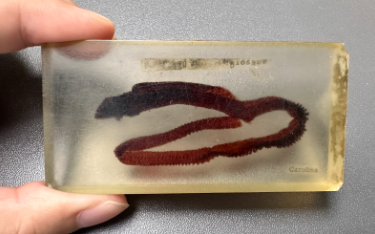
What is the common name of this specimen? This is also known as a Dolichoglossus.
Acorn worm
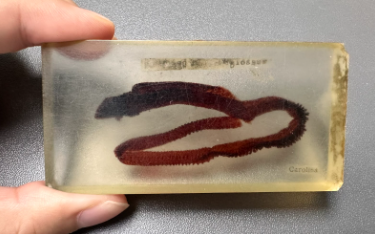
What is the scientific name of this specimen?
Saccoglossus kowalevskii
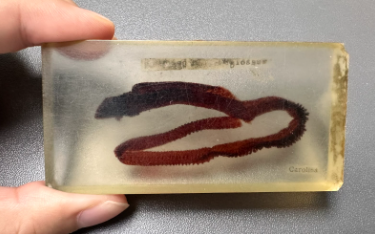
What is the phylum of this specimen?
Phylum Hemichordata
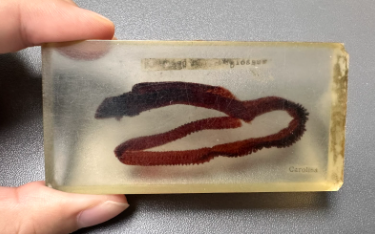
What is the class of this specimen?
Class Enteropneusta
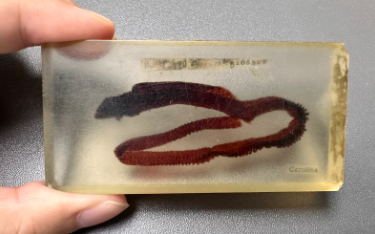
What is the family of this specimen?
Family Harrimaniidae
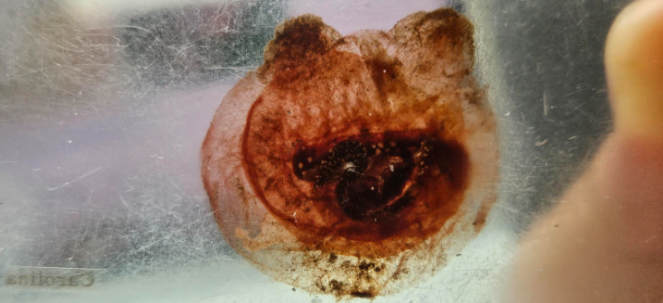
What is the common name of this specimen? This is also known as sea grapes.
Sea squirt
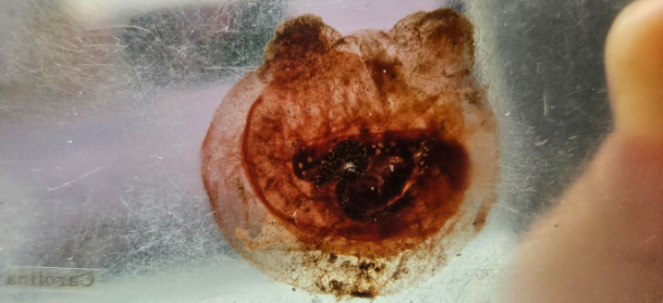
What is the scientific name of this specimen?
Molgula sp.
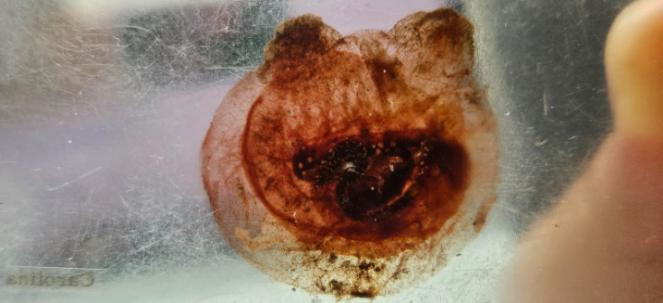
What is the subphylum of this specimen?
Subphylum Urochordata
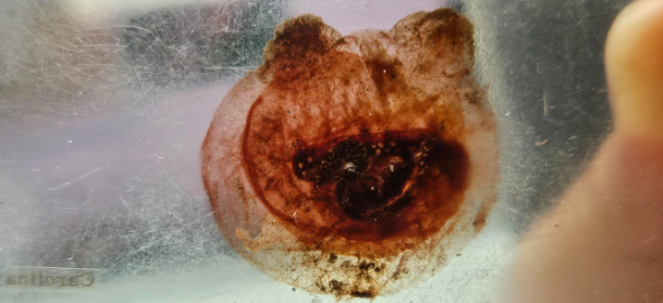
What is the class of this specimen?
Class Ascidiacea
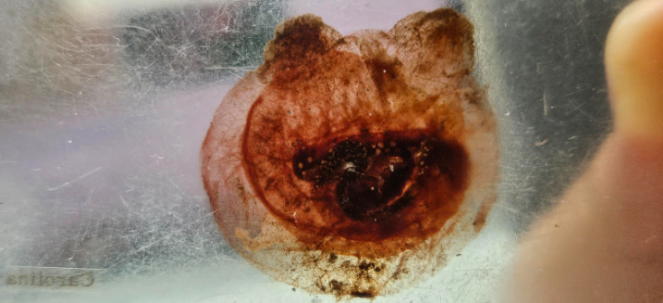
What is the order of this specimen?
Order Stolidobranchia
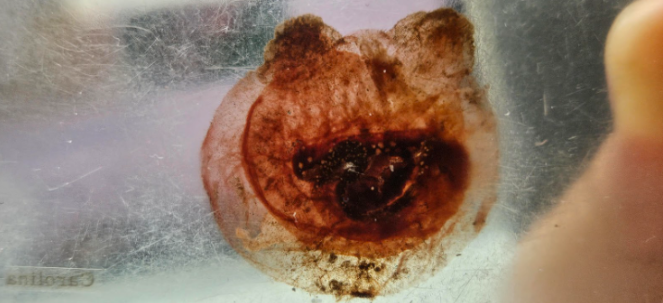
What is the family of this specimen?
Family Molgulidae
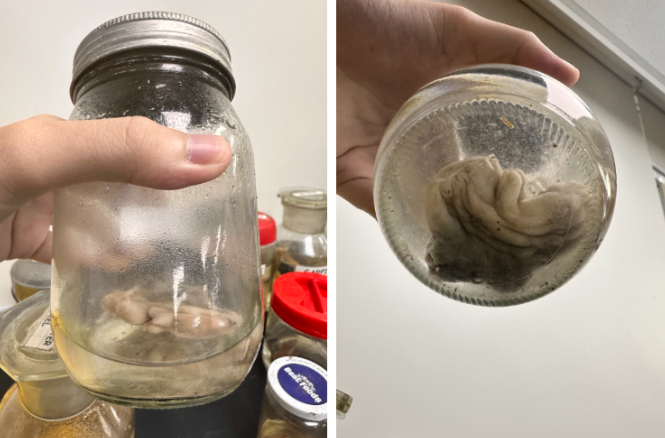
What is the common name of this specimen?
Tunicate
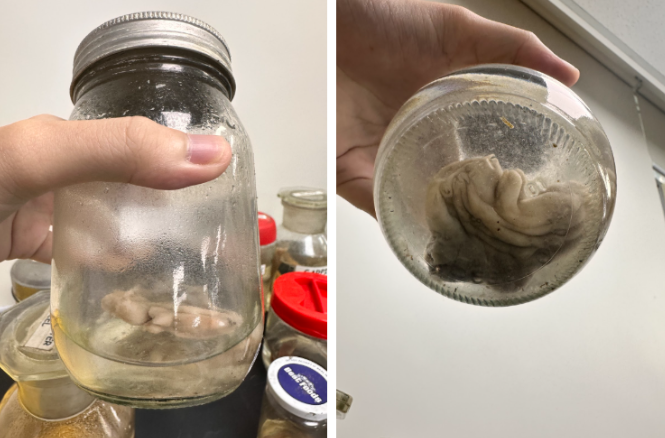
What is the scientific name of this specimen?
Pandocia sp.
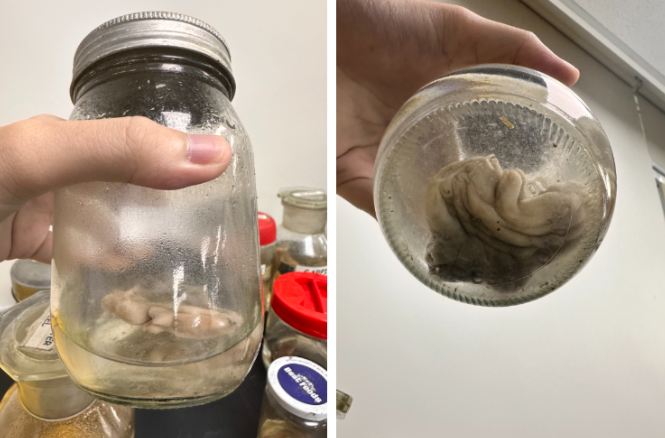
What is the Subphylum of this specimen?
Subphylum Urochordata
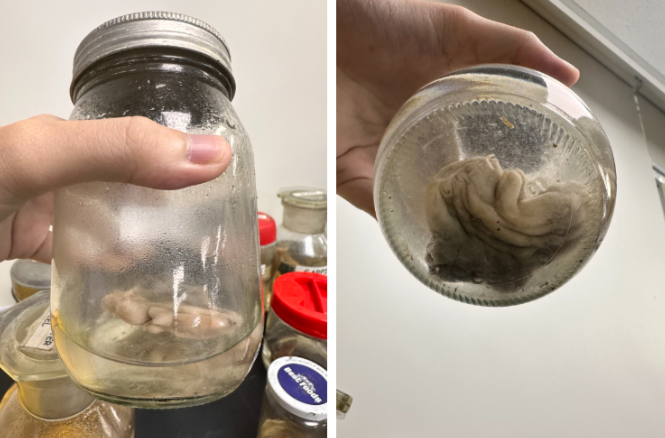
What is the class of this specimen?
Class Larvacea
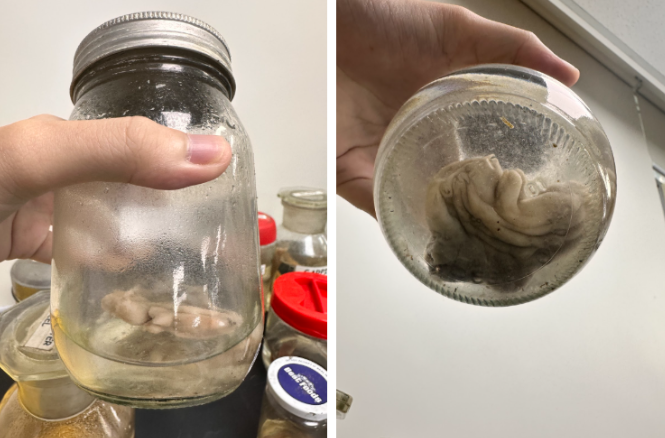
What is the Order of this specimen?
Order Stolidobranchia
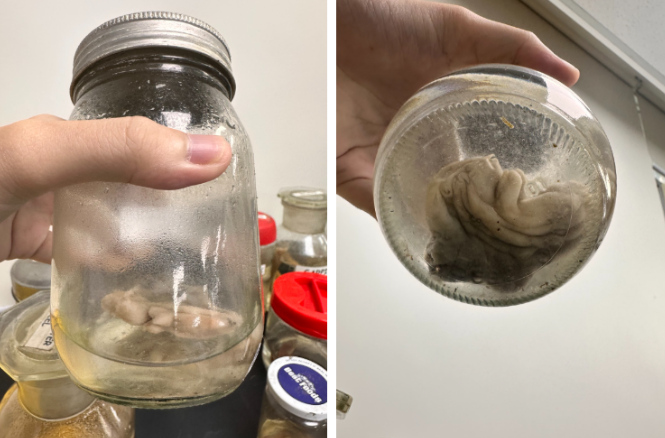
What is the Family of this specimen?
Family Styelidae
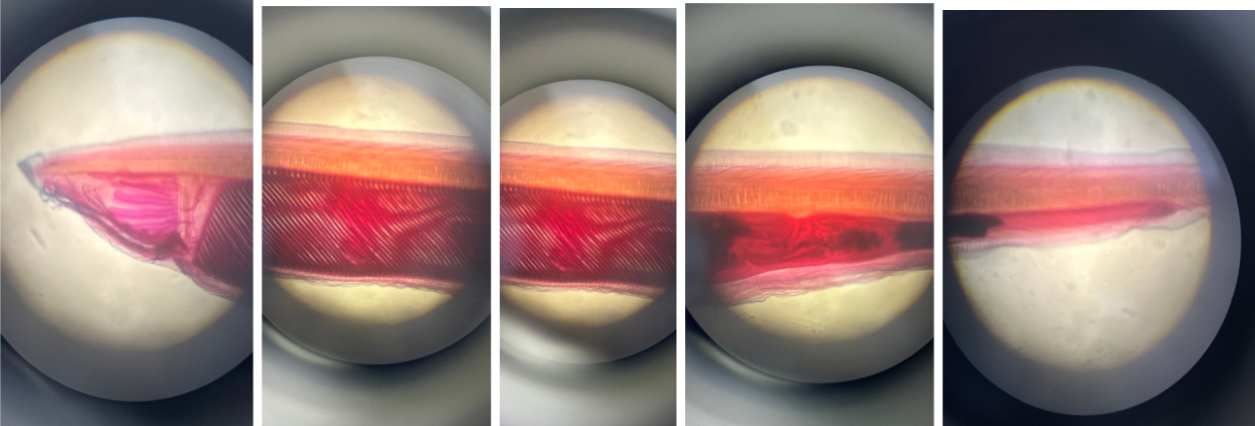
What is the common name of this specimen?
Lancelet / Amphioxus
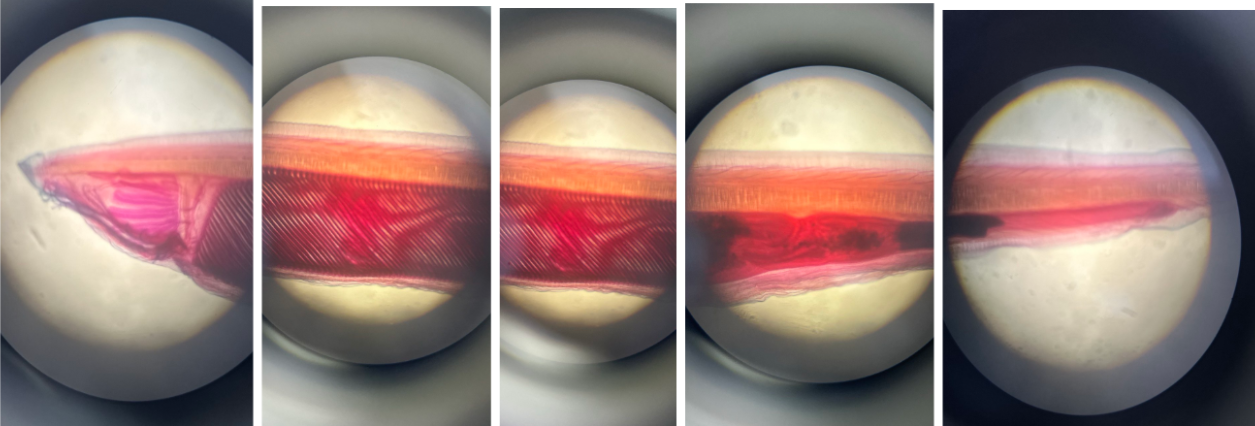
What is the scientific name of this specimen?
Branchiostoma lanceolatum
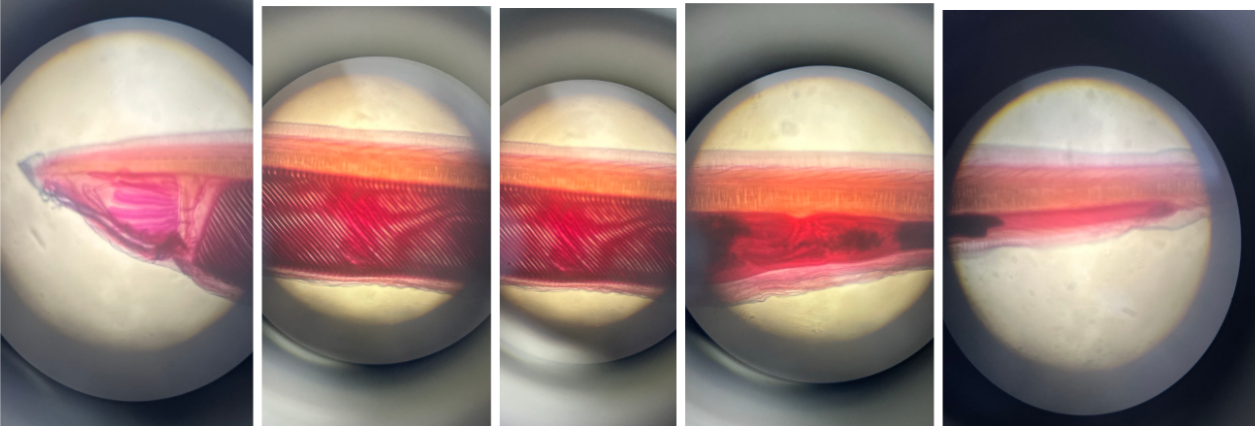
What is the subphylum of this specimen?
Subphylum Cephalochordata
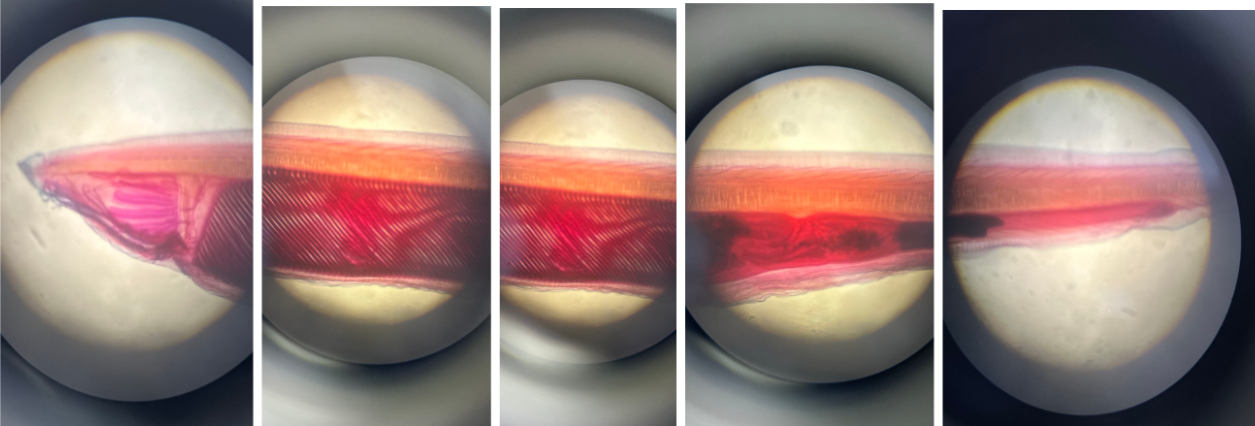
What is the class of this specimen?
Class Leptocardii
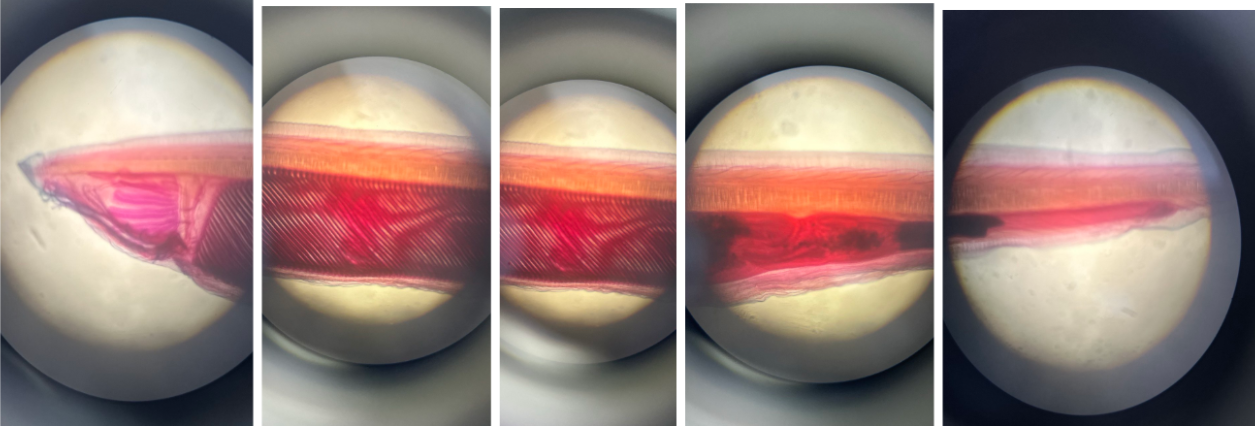
What is the order of this specimen?
Order Amphioxiformes
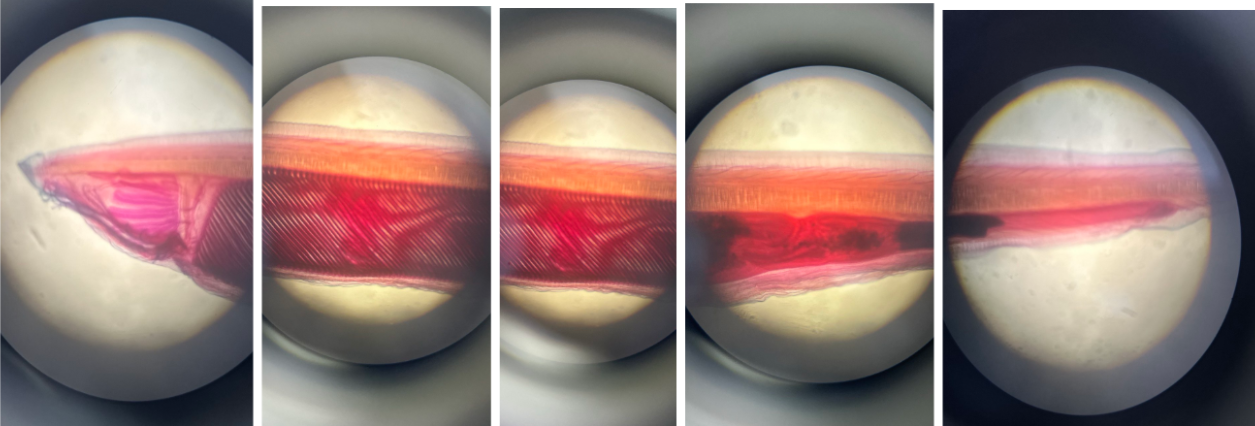
What is the family of this specimen?
Family Branchiostomatidae
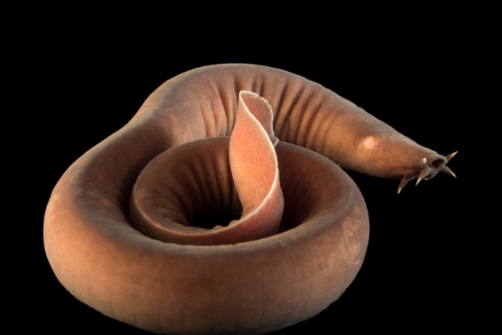
What is the common name of this specimen?
Hagfish
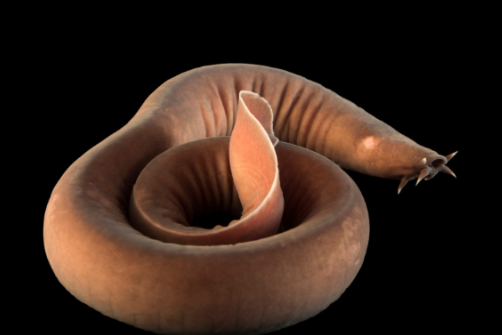
What is the scientific name of this specimen?
Bdellostoma sp. or Eptatretus sp.
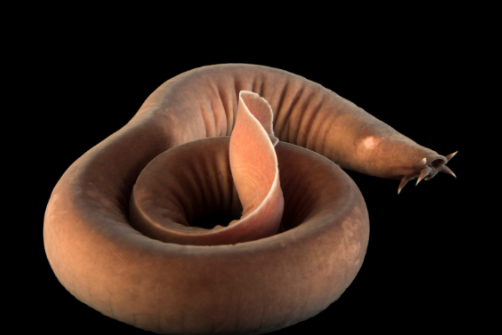
What is the scientific name of the Atlantic specimen of this?
Myxine glutinosa
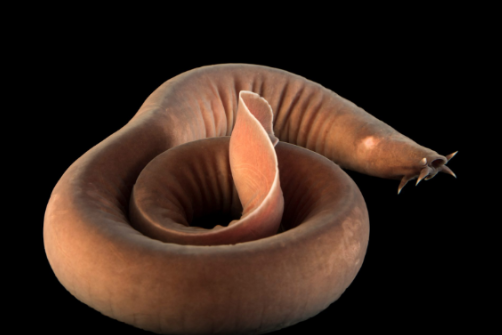
What is the superclass of this specimen?
Superclass Cyclostoma
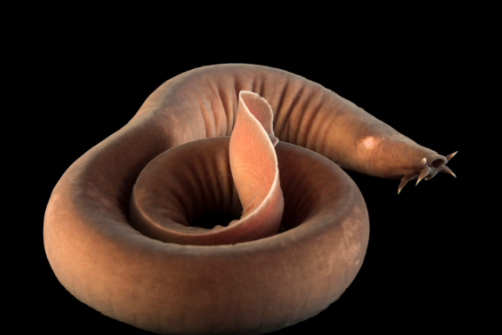
What is the class of this specimen?
Class Agnatha or Myxini
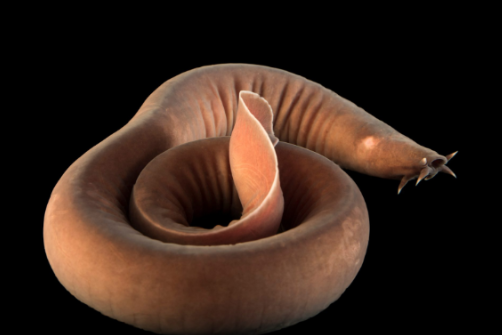
What is the order of this specimen?
Order Cyclostomata
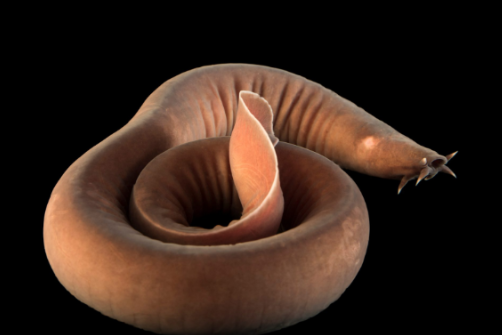
What is the suborder of this specimen?
Suborder Myxinoidea
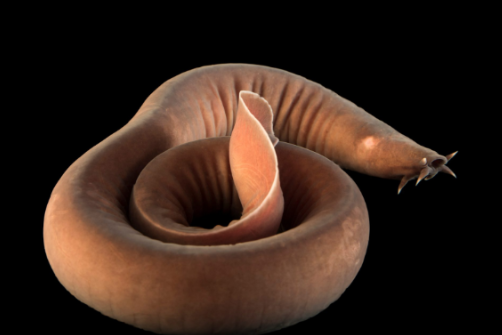
What is the family of this specimen?
Family Myxinidae
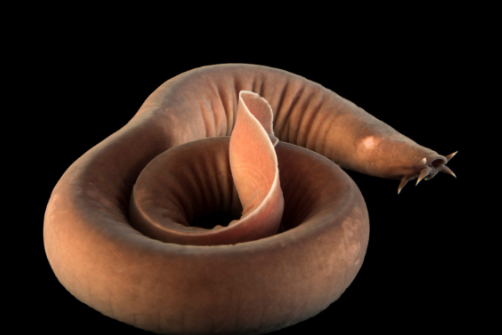
How many gill slits does a hagfish have?
12 pairs
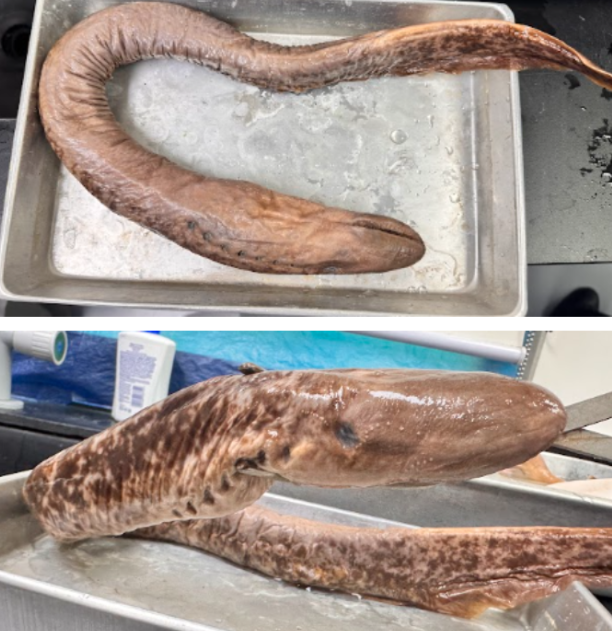
What is the common name of this specimen?
Lamprey
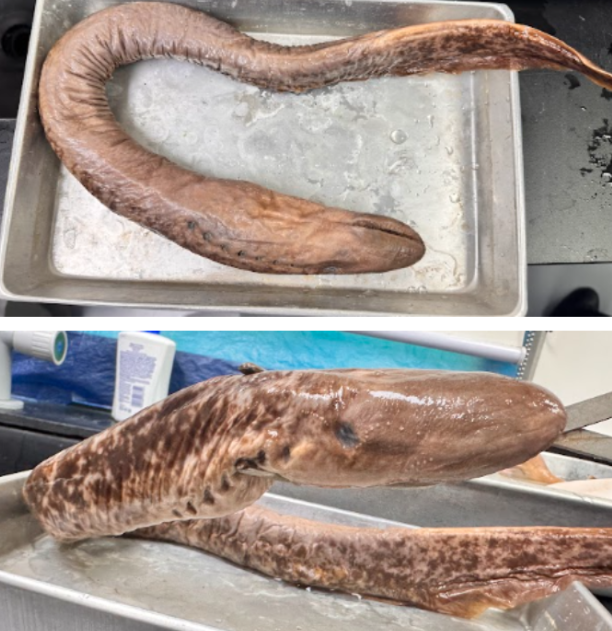
What is the scientific name of this specimen
Petromyzon marinus
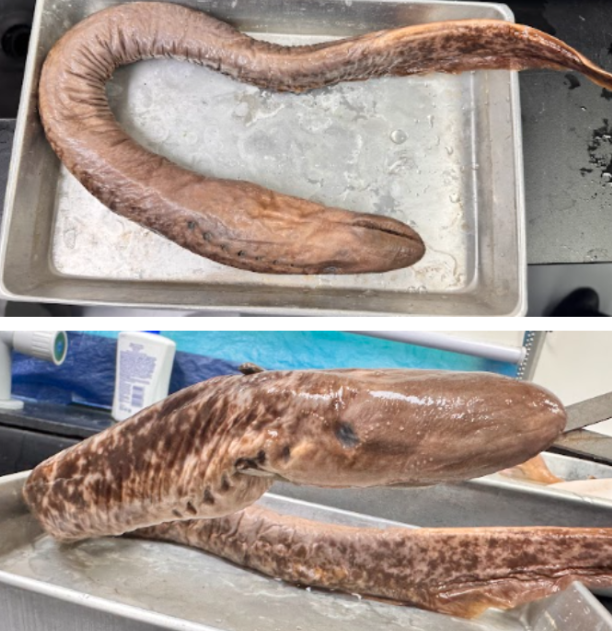
What is the superclass of this specimen
Superclass Cyclostoma
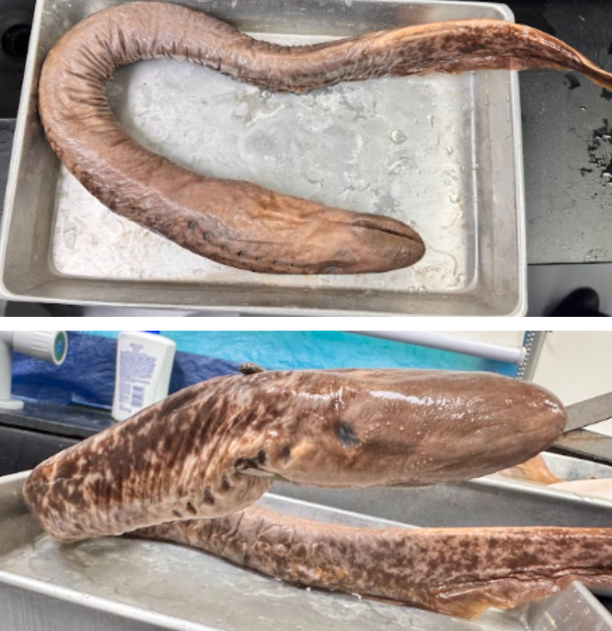
What is the class of this specimen?
Class Agnatha or Petromyzontida
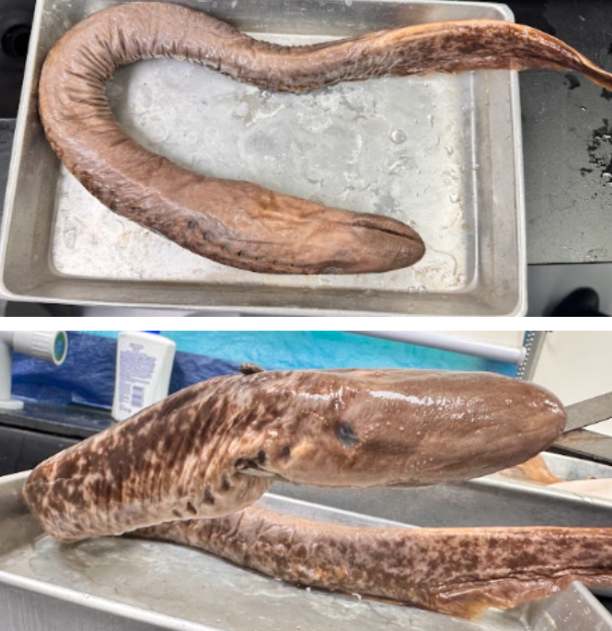
What is the order of this specimen?
Order Cyclostomata
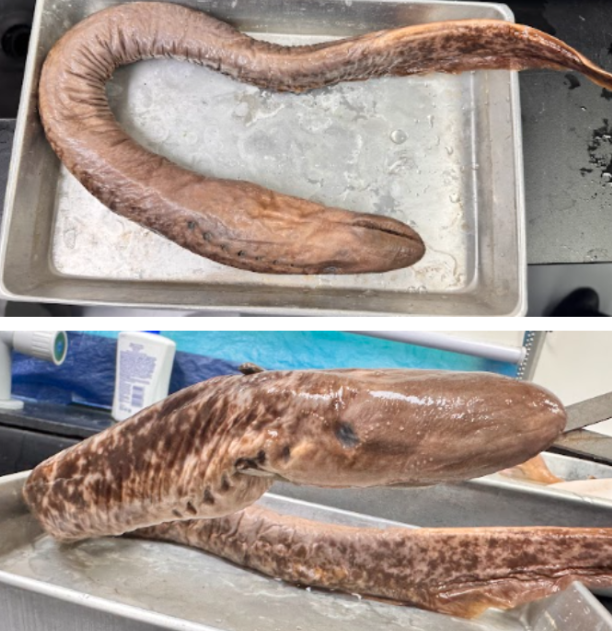
What is the suborder of this specimen?
Suborder Petromyzontia
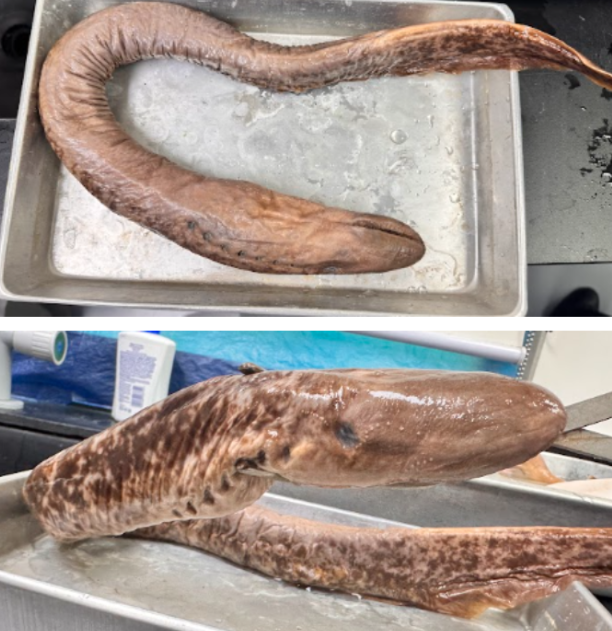
What is the family of this specimen?
Family Petromyzontidae
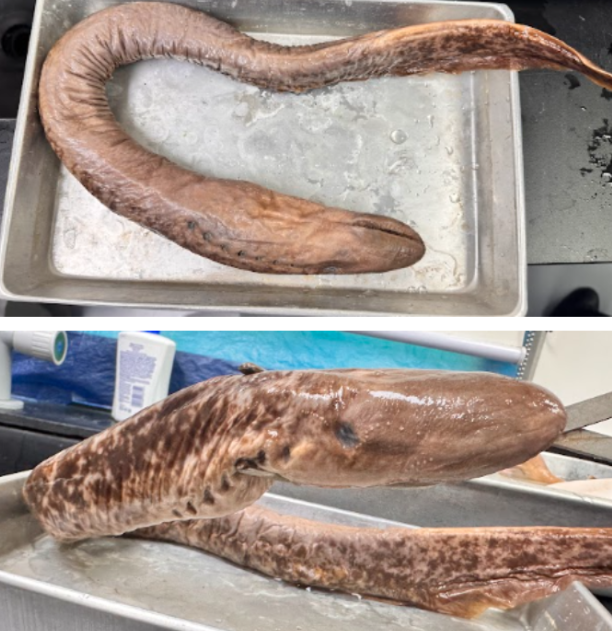
How many gill slits does a lamprey have?
7 pairs
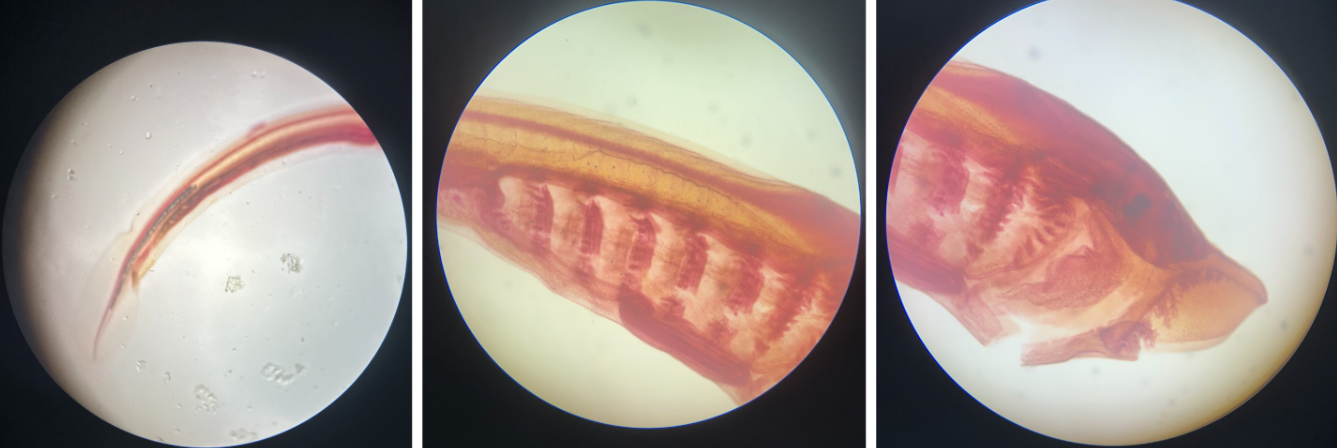
What is this specimen called?
Ammocoetes larvae
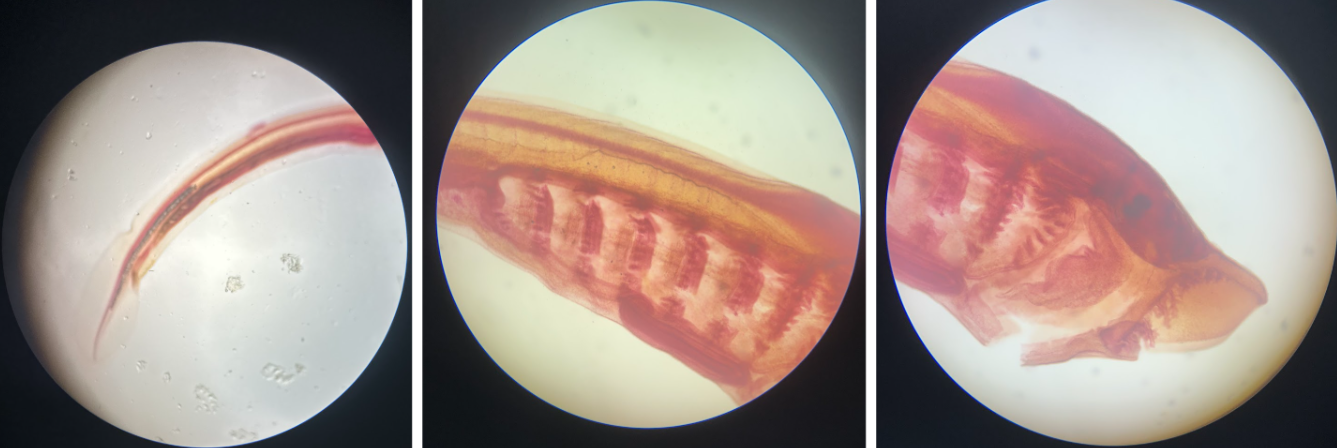
What is the class of this specimen?
Class Agnatha or Petromyzontida
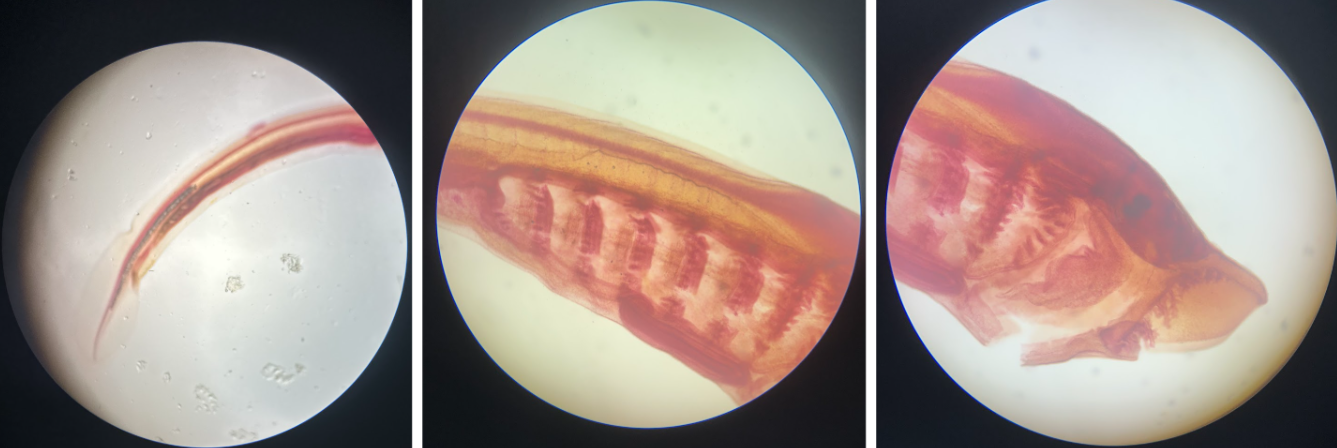
What is the order of this specimen?
Order Petromyzontiformes
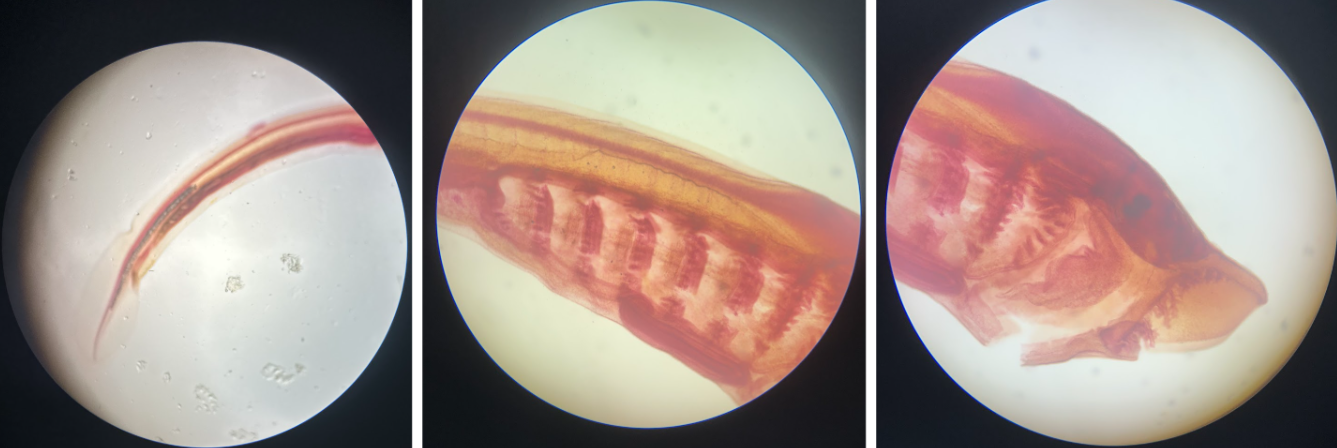
What is the family of this specimen
Family Petromyzontidae
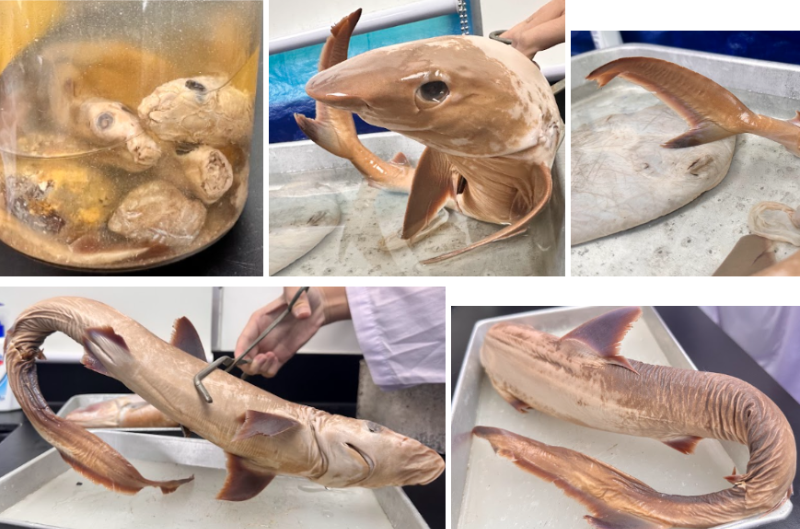
What is the common name of this specimen? Say both types.
Pacific spiny dogfish and Atlantic spiny dogfish

What is the scientific name of this specimen? Say both types.
Squalus suckleyi and Squalus acanthias

What is the superclass of this specimen?
Superclass Gnathostoma

What is the class of this specimen?
Class Chondrichthyes

What is the order of this specimen?
Order Elasmobranchii

How many gills does a Squalus suckleyi have?
5 gills on each side
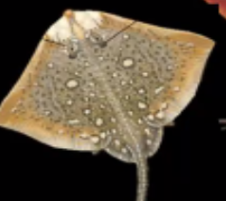
What is the common name of this specimen?
Skate
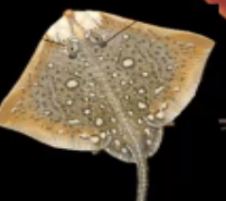
What is the scientific name of this specimen?
Raja clavata
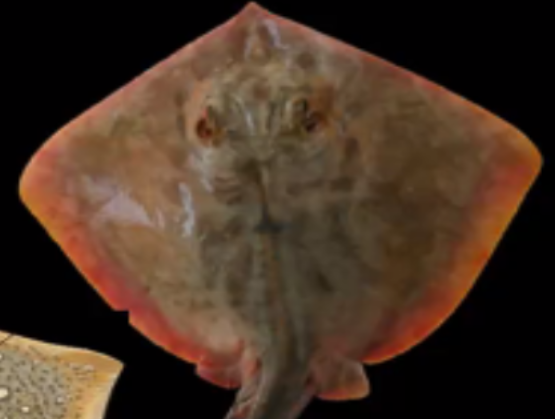
What is the common name of this specimen?
Common stingray
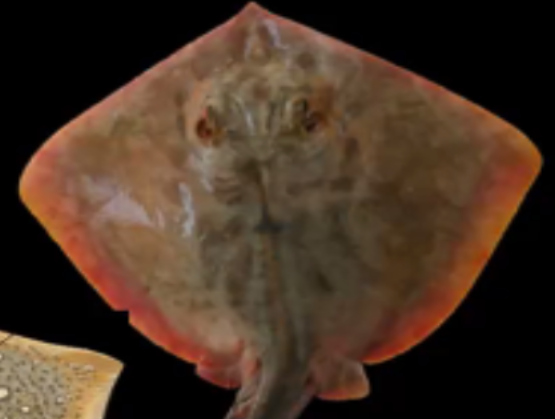
What is the scientific name of this specimen?
Dasyatis pastinaca
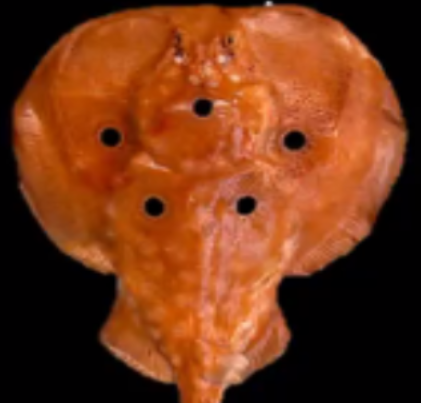
What is the common name of this specimen?
Electric ray
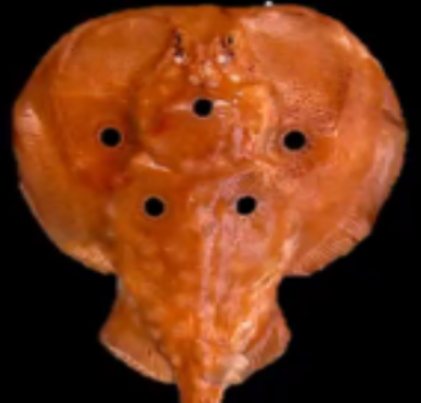
What is the scientific name of this specimen?
Torpedo torpedo
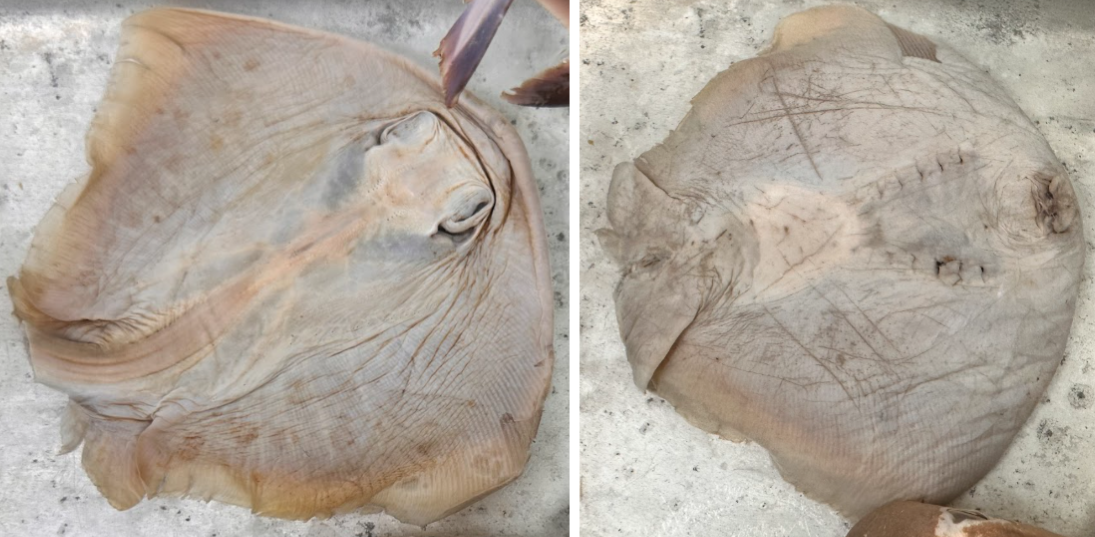
What is the superclass of this specimen?
Superclass Gnathostoma
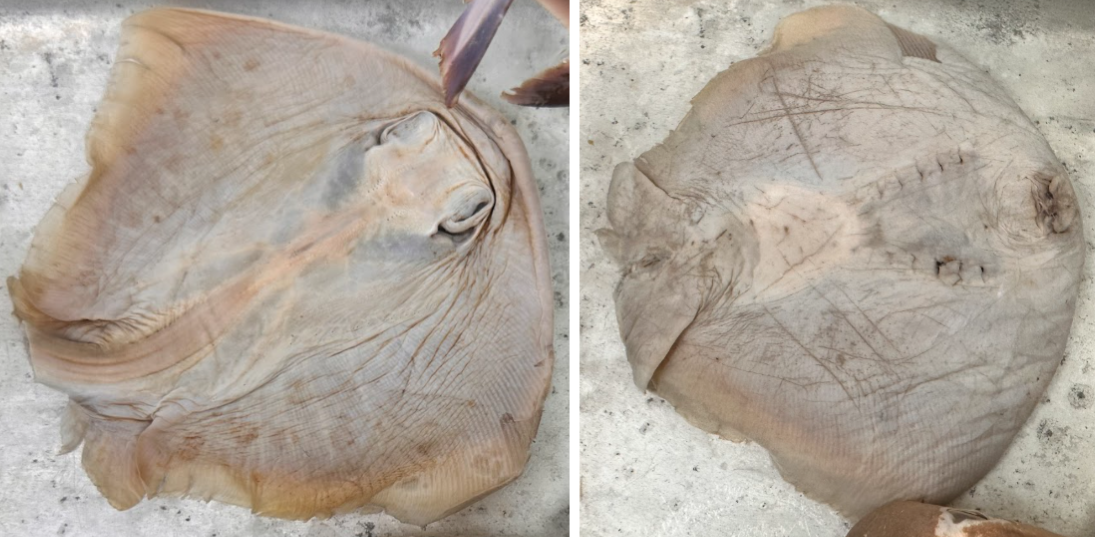
What is the class of this specimen?
Class Chondrichthyes
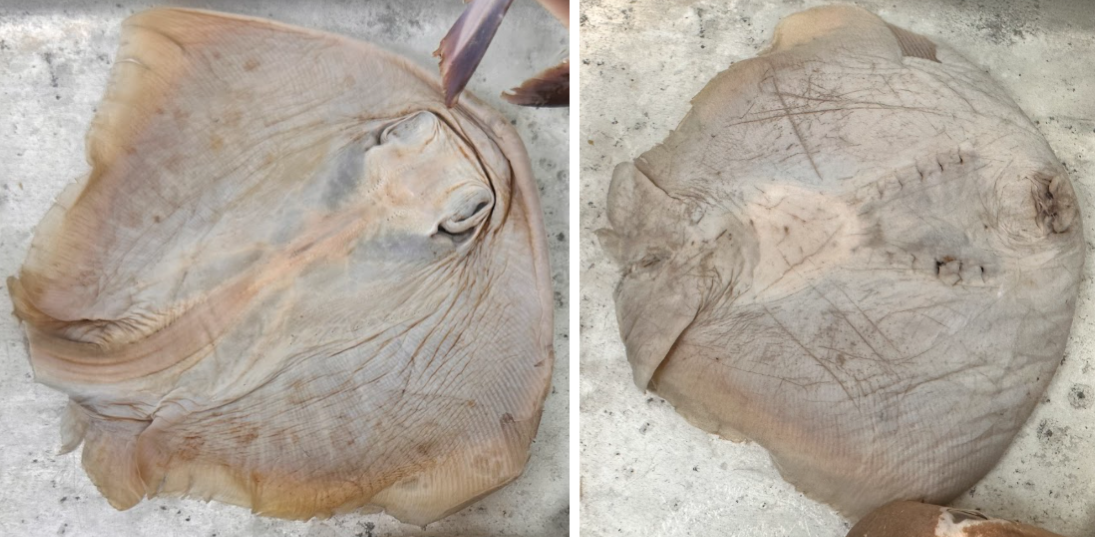
What is the order of this specimen
Order Elasmobranchii
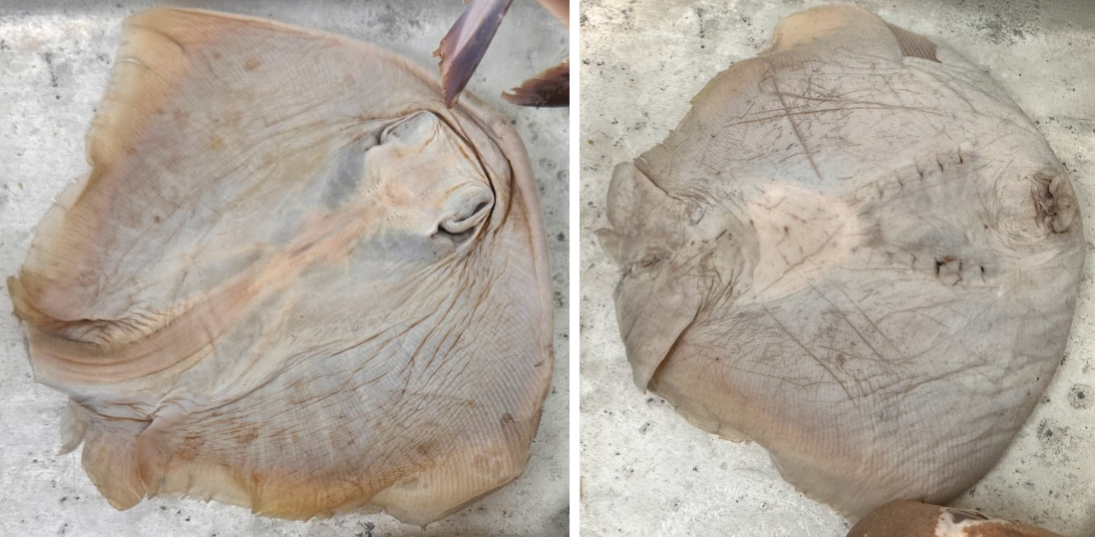
What is the family of this specimen?
Family Rajidae
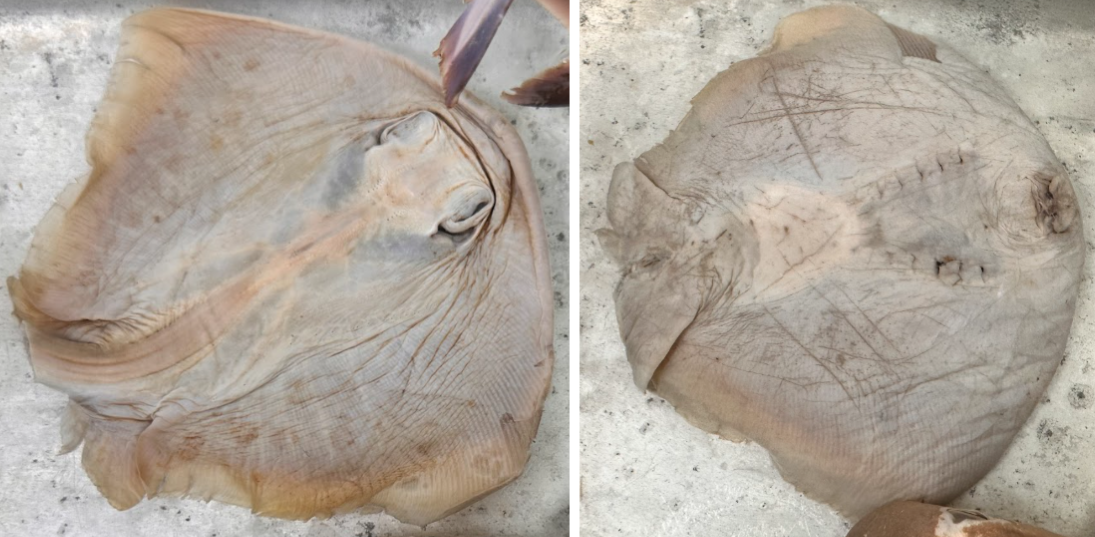
How many gill slits does this specimen have? ____ of gill slits posterior to the mouth
5 pairs
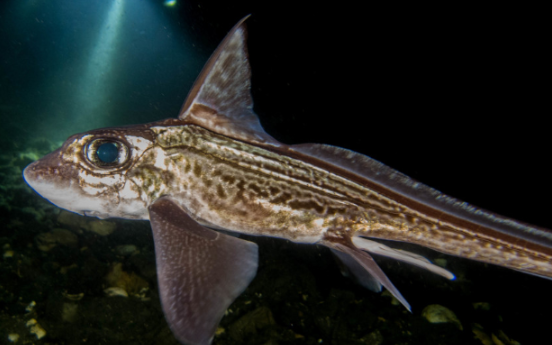
What is the common name of this specimen?
Ratfish
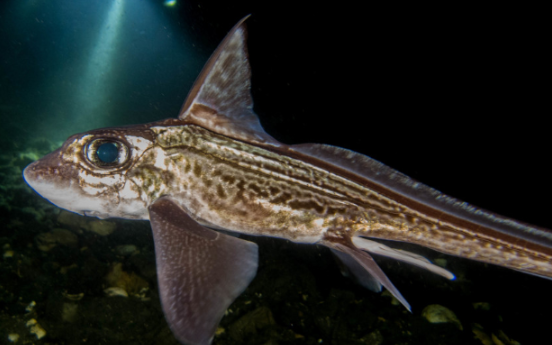
What is the scientific name of this specimen
Chimaera sp.
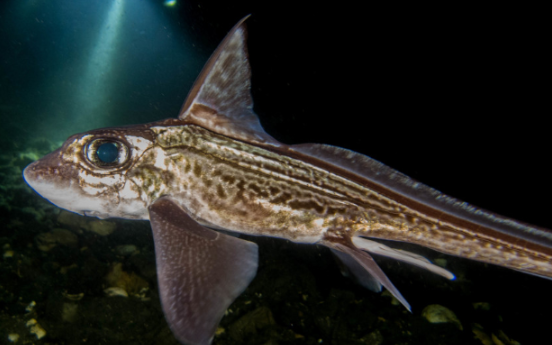
What is the superclass of this specimen?
Superclass Gnathostoma
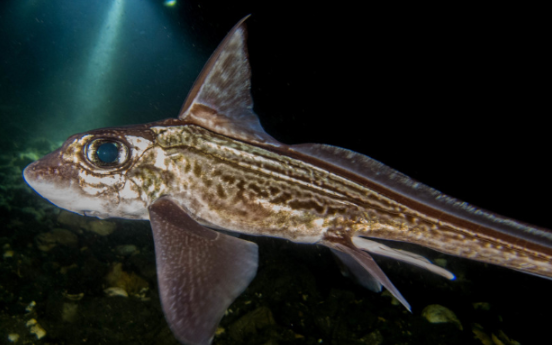
What is the class of this specimen?
Class Chondrichthyes
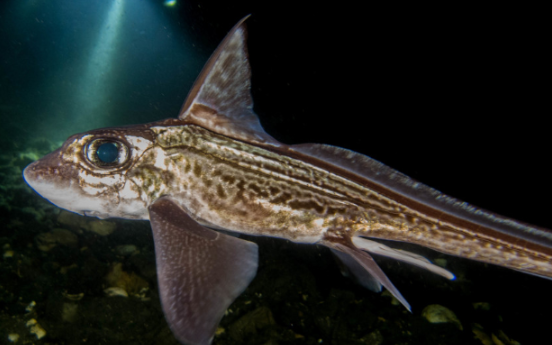
What is the order of this specimen?
Order Holocephali
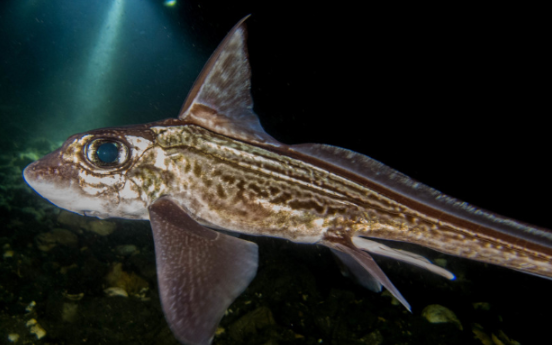
How many gill slits does this specimen have? It is covered by an operculum
1
Do skates, stingrays, and sharks have operculum?
No
Does a ratfish have an operculum? It covers it’s single large gill opening.
Yes
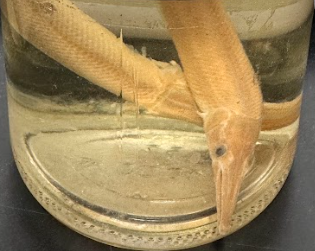
What is the common name of this specimen?
Garpike
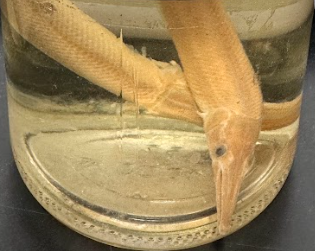
What is the scientific name of this specimen?
Lepisosteus sp.
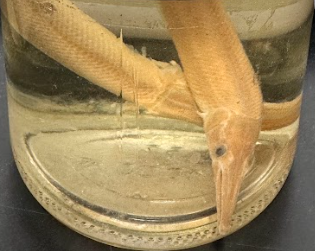
What is the class of this specimen?
Class Osteichthyes
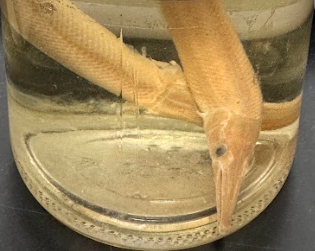
What is the subclass of this specimen?
Subclass Actinopterygii or Teleostomi
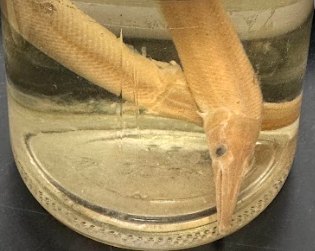
What is the order of this specimen?
Order Holostei
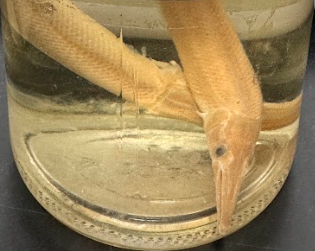
What is the suborder of this specimen?
Suborder Lepidosteoidae
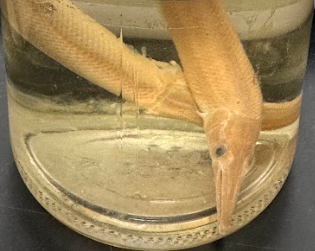
What is the family of this specimen?
Family Lepisosteidae
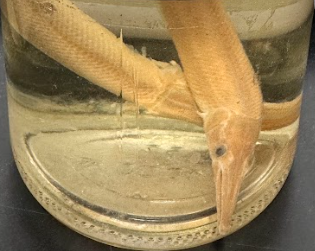
What kind of scales does this specimen have?
ganoid scales
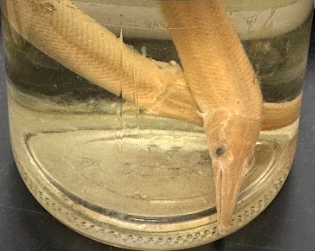
Does this specimen have spiracles?
No
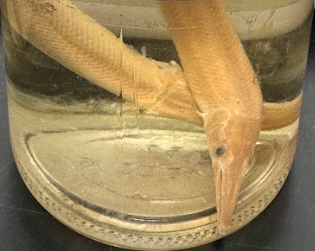
Does this specimen have a bony operculum?
Yes
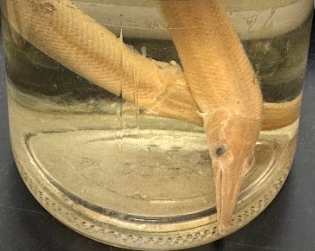
This specimen has median and paired fins with____. (clue: it is a bone that supports the fin; jointed or segmented dermal scales in teleosts)
lepidotrichia
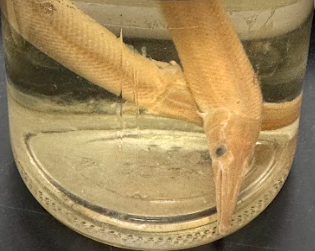
The tail of this specimen is _____ approaching homocercal type.
heterocercal
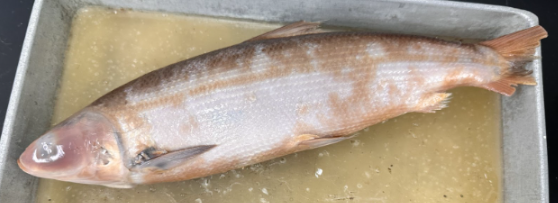
What is the common name of this specimen?
Milkfish or Bangus
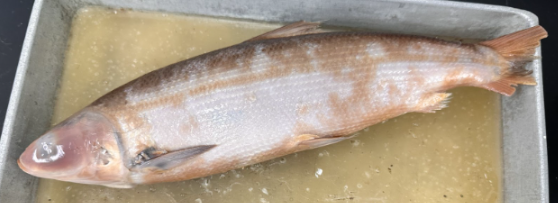
What is the scientific name of this specimen?
Chanos chanos
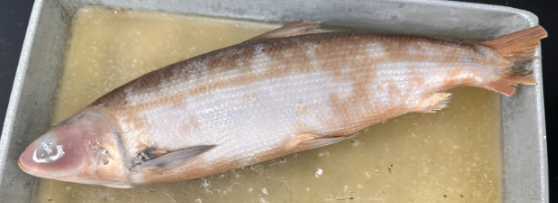
What is the class of this specimen?
Class Osteichthyes
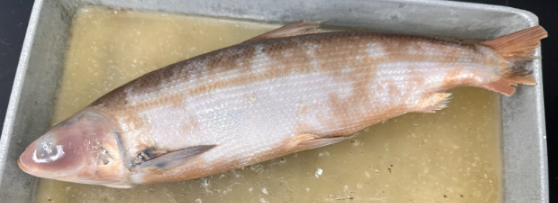
What is the subclass of this specimen?
Subclass Actinopterygii or Teleostomi
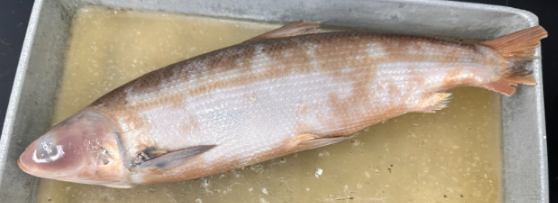
What is the order of this specimen?
Order Teleostei
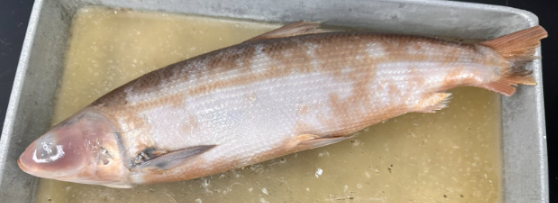
What is the family of this specimen?
Family Chanidae
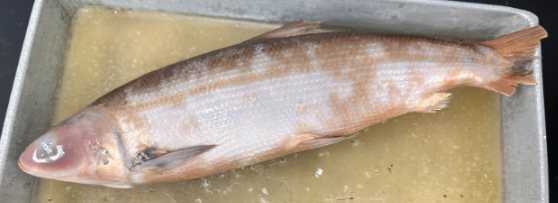
What is the exoskeleton or the covering of this specimen? (clue: same with salmon)
Cycloid scales
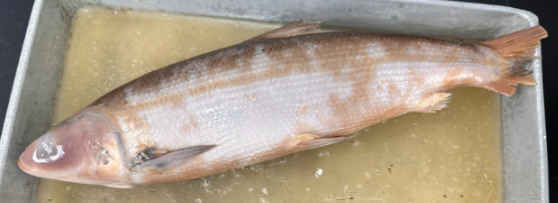
What kind of fins do bangus have? (clue: jointed or segmented bony)
Lepidotrichia
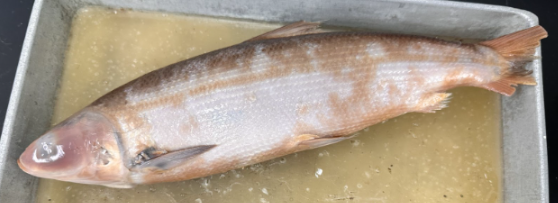
The tail fin of Bangus is heterocercal or homocercal?
Homocercal
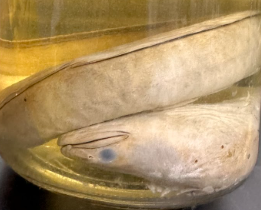
What is the common name of this specimen?
Freshwater eel
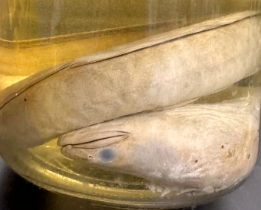
What is the scientific name of this specimen?
Anguilla sp.
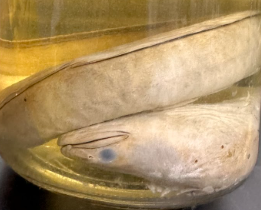
What is the class of this specimen?
Class Osteichthyes
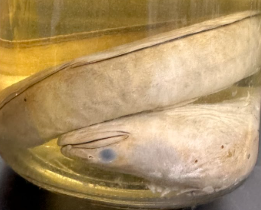
What is the subclass of this specimen?
Subclass Actinopterygii or Teleostomi
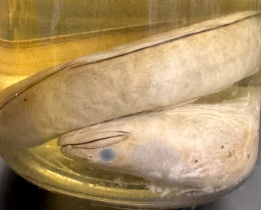
What is the order of this specimen?
Order Teleostei
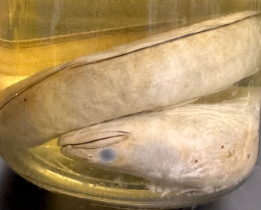
What is the family of this specimen?
Family Anguillidae
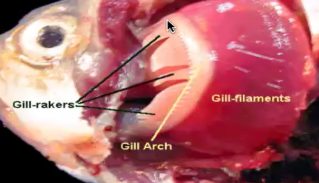
Memorize this: Gill rakers → inner margin & Gill slits → spaces between gill arch. Type “Yes” if done
Yes
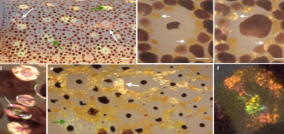
What do you call the pigment-bearing cells?
Chromatophores
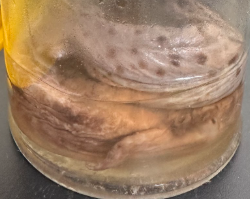
What is the common name of this specimen? It is also called as the large aquatic salamander.
Mudpuppy
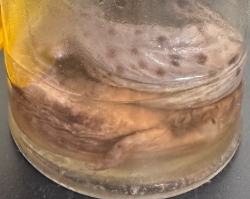
What is the scientific name of this specimen?
Necturus maculosus